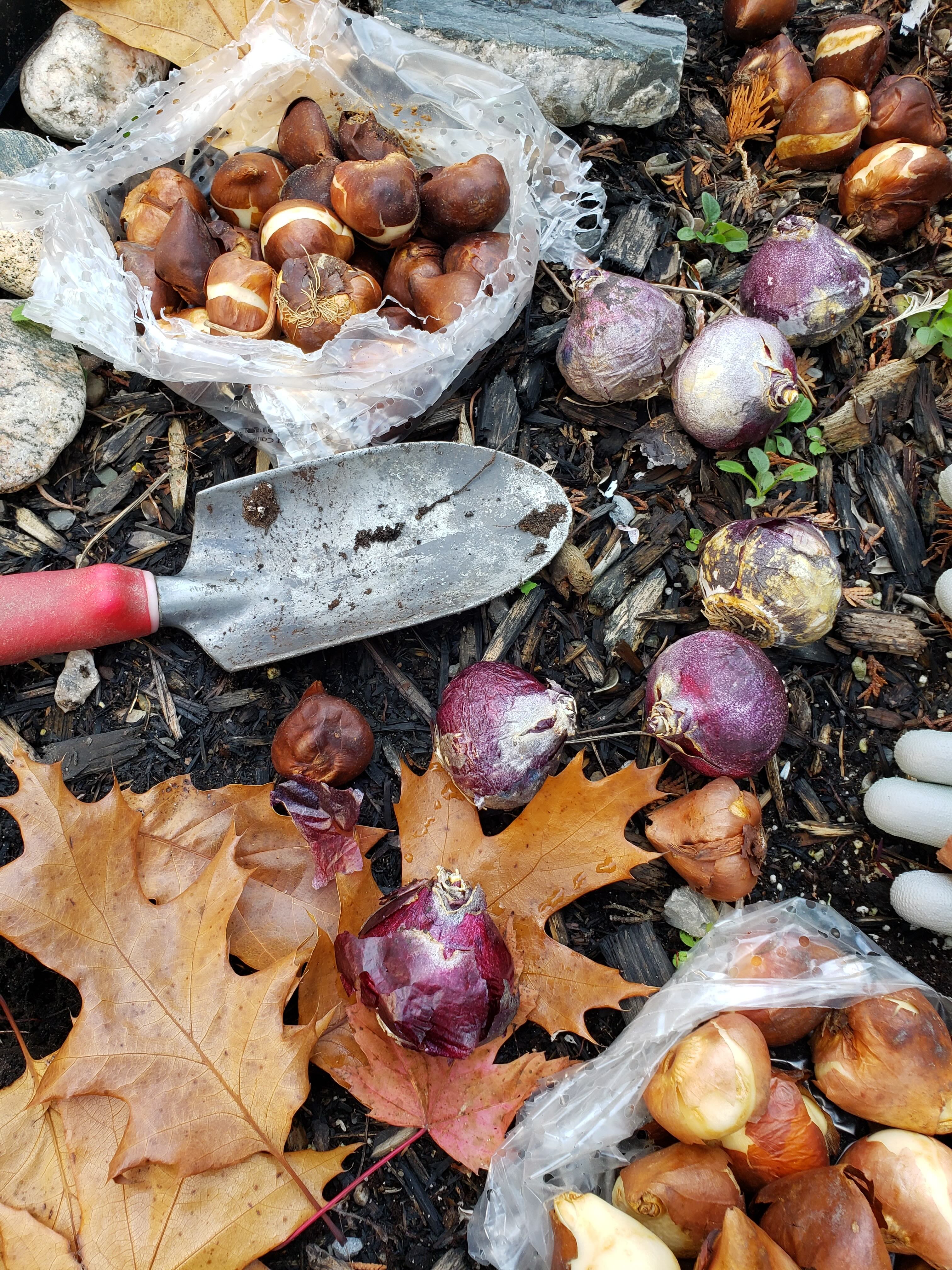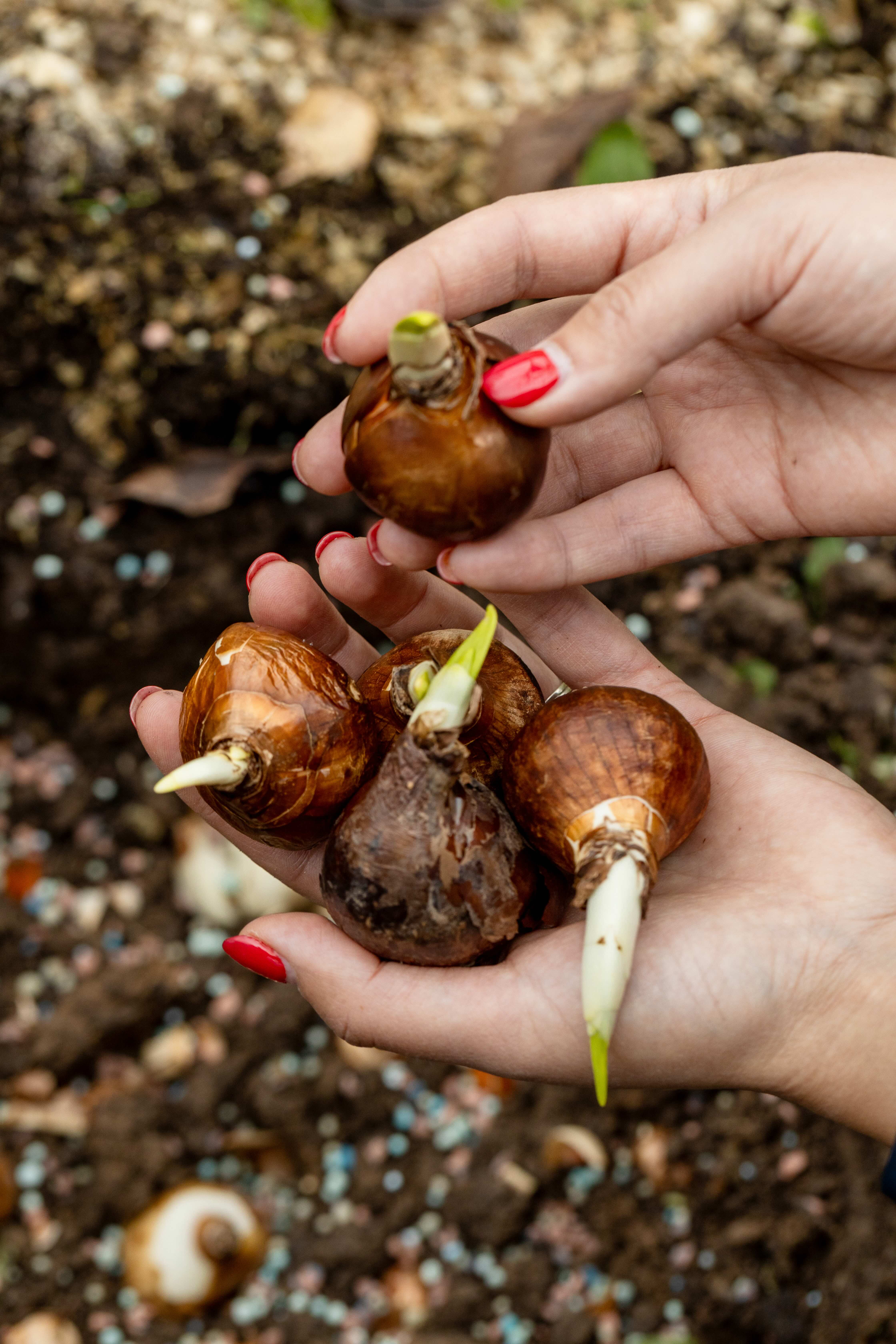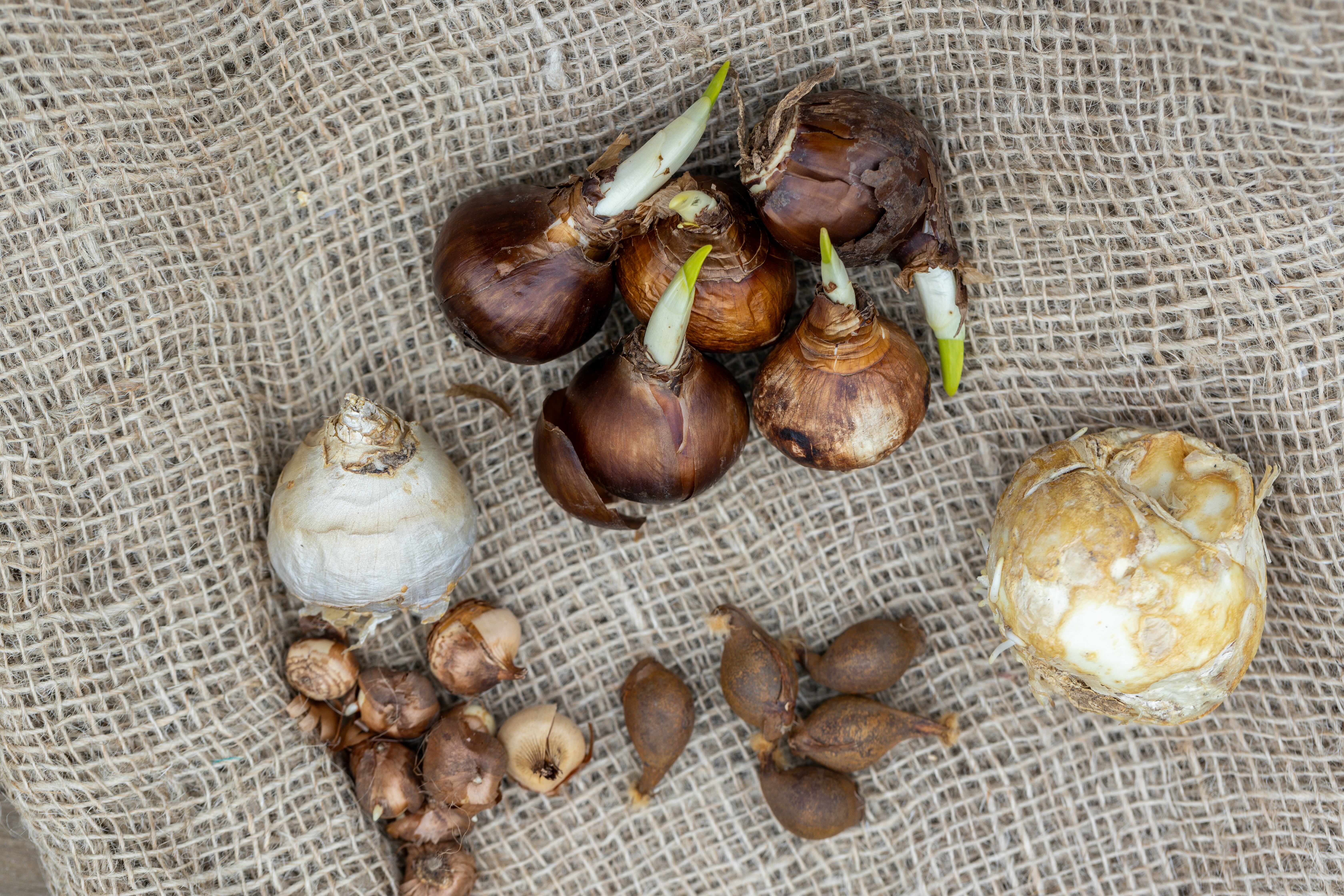What most people don’t know (but now you do) is that fall bulbs are the key to a vibrant spring garden. They offer a burst of color when most of your other plants aren’t ready to bloom yet. But, the secret is, you need to plant your fall bulbs now for spring blooms, otherwise, you may miss out on enjoying the very first spring blooms of the year. This blog will cover everything you need to know about fall bulbs from choosing your favorites to getting them in the ground. Let’s dig in!



What Are Fall Bulbs?
As stated above, fall bulbs are typically planted in the autumn months, allowing them to establish roots before winter sets in. These bulbs include popular varieties like tulips, daffodils, hyacinths, and crocuses. The magic of bulbs lies in their ability to store nutrients, enabling them to bloom beautifully in the spring, even after a chilly winter.
Why Plant Fall Bulbs?
- Spring Color: Planting bulbs in the fall ensures you’ll have a stunning array of flowers to greet you as winter fades away.
- Low Maintenance: Once planted, bulbs require minimal care, making them perfect for busy gardeners or those new to planting.
- Naturalization: Many bulbs will multiply over the years, creating a stunning, natural look in your garden that gets better with time.
Choosing the Right Bulbs
When selecting bulbs for your garden, consider the following:
- Hardiness Zone: Check your USDA hardiness zone to choose bulbs that will thrive in your climate. Here in Hampton Roads, we live in zones 7b to 8a.
- Sunlight Requirements: Some bulbs prefer full sun, while others do well in partial shade. Plan your garden layout accordingly.
Bloom Time: Select a variety of bulbs that bloom at different times to extend your spring color palette. Early bloomers like crocuses can be paired with later bloomers like tulips for a staggered display.
How to Plant Fall Bulbs
- Timing: Aim to plant your bulbs a few weeks before the ground freezes (that’s right now!). In most areas, this means planting in September to early November.
- Location: Choose a spot with well-drained soil and adequate sunlight. Bulbs thrive in areas where water doesn’t pool after heavy rains.
- Soil Preparation: Loosen the soil to a depth of about 12 inches and mix in compost to improve drainage and nutrient content.
- Planting Depth: As a general rule, plant bulbs at a depth that is about three times their height. For example, a 2-inch bulb should be planted about 6 inches deep. But you can also find more specific instructions on the packaging or from one of our Green Team members.
- Spacing: Space bulbs 3-6 inches apart, depending on their size. Larger bulbs like tulips need more space than smaller ones like crocuses.
- Feeding: Make sure to add in some Espoma Bulb Tone to help your bulbs get through the winter ahead for a strong spring start.
Watering: Give your newly planted bulbs a good drink, but avoid overwatering. Bulbs need moisture to establish roots, but they can rot if they sit in soggy soil.
Caring for Your Bulbs
Once planted, fall bulbs are relatively low-maintenance, but here are a few tips to keep them happy before blooming:
- Mulch: Applying a layer of mulch can help regulate soil temperature and moisture, as well as keep weeds at bay.
- Watering: If the fall is particularly dry, give your bulbs a light watering. They need moisture to establish roots but will benefit from the rain that usually comes in winter.
Common Mistakes to Avoid
- Planting Too Late: Make sure to plant before the ground freezes to give bulbs time to establish roots.
- Overcrowding: While it’s tempting to plant bulbs close together for a full look, overcrowding can lead to poor air circulation and disease.
- Ignoring the Labels: Each bulb has specific planting requirements. Follow the instructions on the packaging for the best results.
Enjoying Your Blooms
As the temperatures warm and spring arrives, you’ll be rewarded for your efforts with stunning blooms that bring your garden to life. Once flowers fade, allow the foliage to die back naturally; this helps the bulbs store energy for next year’s show. Planting fall bulbs is a delightful way to prepare your garden for the vibrant blooms of spring. With minimal effort and a little planning, you can create a beautiful landscape that welcomes the season with open arms. To stay inspired and grow with us, follow us on Facebook, Instagram, Pinterest, and TikTok to dig into the joys of gardening!
